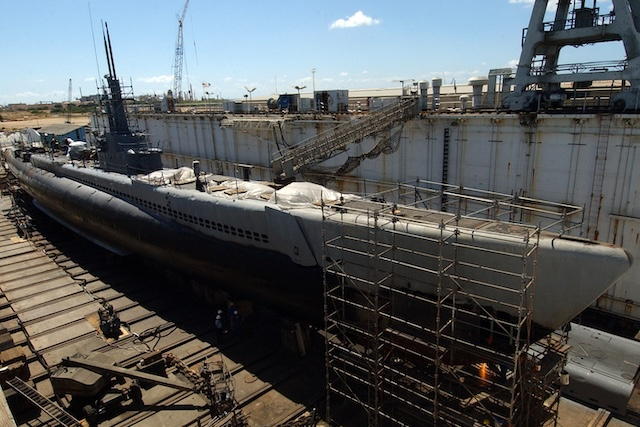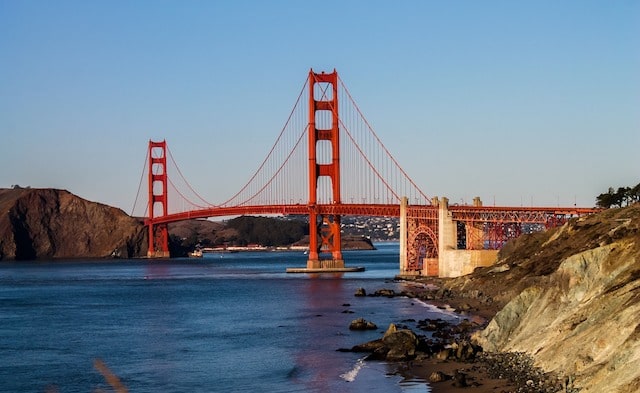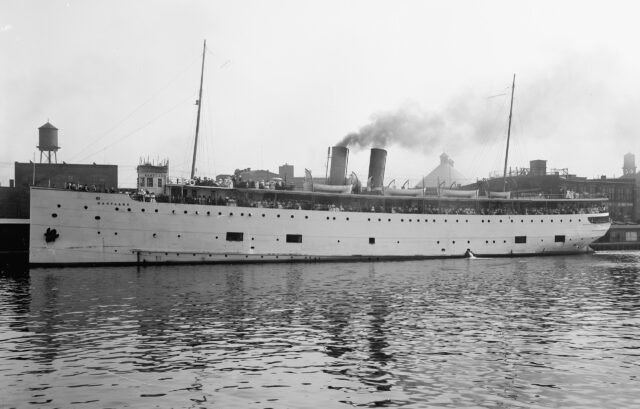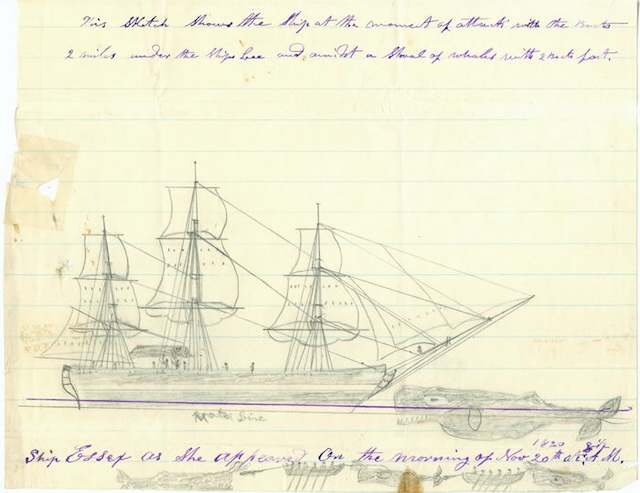10 Strange and True Stories of Things That Sank Without a Trace
For most of human history, if you wanted to explore the world, water was non-negotiable—you had to travel by sea. And on the surface, everything seems calm and serene. But when things go wrong out there, they go really wrong. Because let’s be honest: sinking sucks.
It’s cold. You can’t breathe. The pressure is crushing—literally. And there are plenty of things down there that really don’t care you had plans for the weekend. In short: do not sink.
But not everything in history has been so lucky. Ships, submarines, even floating cities—many have met a watery fate. And what’s wild is how often these stories aren’t just tragic… they’re downright bizarre.
So buckle up (or grab a life vest), because these are some of the weirdest and most unexpected sinking stories from history. You might be surprised by what actually went down.
10. The USS Bowfin: The Only Submarine to Ever Sink a Bus

Submarines are built to hunt ships, not city buses. But don’t tell that to the USS Bowfin, a WWII-era American sub that accidentally made transportation history.
In 1944, after a refit at Pearl Harbor, the Bowfin returned to the Pacific theater. While tracking a Japanese convoy near Okinawa, the sub spotted three enemy vessels moored at a harbor. Wasting no time, the crew launched three torpedoes, changed position, and fired off another salvo.
The attack successfully destroyed multiple ships—but also demolished a pier in the process. That pier just happened to have a crane, some supplies… and a Japanese bus parked on it.
Yes, a bus—a land vehicle, nowhere near seaworthy—was one of the unintended casualties. And just like that, the USS Bowfin earned the unusual distinction of being the only submarine in history to sink public transportation.
9. L. Ron Hubbard Claimed He Sank Two Submarines… But Probably Just Attacked a Log

Before founding Scientology and commanding a bizarre naval-themed organization called the Sea Org, L. Ron Hubbard was a U.S. Navy officer during WWII—and, according to him, a full-blown action hero.
In May 1943, Hubbard claimed he engaged and destroyed two Japanese submarines lurking off the coast of Oregon. Sounds impressive—until you check the official Navy records, which make zero mention of any enemy subs in the area. What did happen, allegedly, was that Hubbard had his crew fire on a floating log, which he may have mistaken for a vessel.
Unfazed by the lack of evidence, Hubbard insisted the attack was real and that the U.S. military covered it up to avoid public panic. The Navy, for its part, seemed less impressed. Shortly afterward, Hubbard was relieved of command for another misadventure—this time, he sailed into Mexican waters without permission and opened fire on an uninhabited island… just because.
Hero? Visionary? Log hunter? Maybe all three—depending on who’s telling the story.
8. North Korea Claimed They Sank a Ship That Wasn’t Even in the Water

The fog of war can obscure a lot—who fired first, what really happened where, and why half the maps are still drawn in pencil. But sometimes, the confusion isn’t fog—it’s just bold-faced fiction. Enter: North Korea.
In 1950, North Korean sources proudly declared they had sunk the USS Baltimore, a U.S. Navy heavy cruiser. Quite the feather in the cap—if it had actually happened. The only problem? The Baltimore had been decommissioned in 1947, three years before the supposed attack.
Unless the North Korean Navy developed time-traveling torpedoes, it seems more likely they torpedoed a rumor… or maybe just an empty stretch of ocean. Either way, this naval “victory” gets points for imagination, if not accuracy.
7. The Mysterious Sinking of a Radioactive Aircraft Carrier Near San Francisco

When a vessel is intentionally sunk by the military or its owning company, it’s known as scuttling. There’s nothing inherently wrong with this practice. In fact, it can be quite beneficial. Sometimes, scuttled ships are used to create artificial reefs for fish. These reefs then become amazing spots for scuba diving enthusiasts. It’s an innovative form of recycling, giving a second life to these large structures in a way that benefits the marine ecosystem.
However, when it comes to scuttling a ship, transparency is key. You’d think that if someone is going to sink a vessel, they’d inform the public. And this is especially crucial if the ship in question is radioactive.
The USS Independence is a prime example. This aircraft carrier had a significant role in nuclear bomb tests. As a consequence, it absorbed a substantial amount of radiation. It was then utilized as a target ship at Bikini Atoll.
After its stint at Bikini Atoll, the vessel was brought back to San Francisco in the late 1940s. The purpose? To study nuclear decontamination methods. But then, in 1951, something strange happened. The ship was taken 30 miles offshore and scuttled.
Experts have come forward to say that the ocean acts as a natural buffer against radiation. They claim that the level of contamination is minimal. As a result, the fear of radiation from the ship getting into the fish we might consume is also minimal. Of course, this doesn’t mean there’s absolutely no risk. It’s just that the risk is considered to be at a very low level.
6. Titanic’s Sister Ship Sank a U-Boat Like a Boss

We all know the Titanic, but what about her older sister, the RMS Olympic? She was the OG big boat—launched in 1910 and, for a while, the largest ship in the world. She even responded to Titanic’s distress call in 1912 (but sadly, was too far to help in time). While Titanic’s career was tragically short, Olympic went on to have a wild ride—including a one-on-one naval showdown.
When WWI broke out, no one needed luxury ocean liners, so Olympic ditched the fancy décor for dazzle camouflage, deck guns, and a new name: HMT Olympic. She started hauling troops and dodging danger like a proper warhorse.
Then in 1918, a German U-boat made the fatal mistake of crossing her path in the English Channel. Olympic didn’t flinch. Instead of panicking, her crew did the maritime equivalent of throwing hands—they rammed the sub at full speed, sending it to the seafloor.
5. Lost Beneath the Waves: The Sunken Nuclear Submarines Few Talk About

Imagine this: deep below the ocean’s surface, nuclear submarines—some bristling with atomic reactors and even nuclear weapons—are quietly resting on the seabed, forgotten by most, yet potentially ticking away like ghostly time capsules of the Cold War.
Since the first nuclear-powered sub launched in 1955, the world has marveled at these underwater marvels. But while many completed their missions and returned home, not all were so lucky. At least eight nuclear submarines have vanished into the ocean’s abyss, lost to accidents, miscalculations, or mechanical failures. Their remains now lie in the icy depths, places where sunlight never reaches—and where no easy rescue can follow.
What’s most unsettling isn’t just the loss of these billion-dollar machines, but what they took with them. Nuclear reactors, still sealed within their metal casings, and in some cases, nuclear warheads, rest at the bottom of the sea. While experts suggest these reactors are well-shielded and won’t pose a serious threat for hundreds of years, it’s still an eerie thought. Just because something is out of sight doesn’t mean it’s harmless.
Take Russia’s sunken submarines as a case in point. Two vessels in particular have drawn global concern: the K-159, which tragically went down in 2003 (not 1963 as some mistakenly report), and the K-27, a sub deliberately scuttled in 1982 despite known radiation leaks. Both lie off the coast of the Arctic, their exact status unclear. Though Russian officials have talked about recovery missions, nothing concrete has been done. Whether due to costs, politics, or the sheer danger of nuclear salvage in extreme conditions, these plans remain frozen—just like the waters they lie beneath.
This little-known chapter in modern history blurs the line between fascinating and terrifying. It’s a reminder of the silent legacies hidden in our oceans—remnants of human ambition, technological might, and, sometimes, catastrophic miscalculation.
4. The Mystery of the Garfield Phones: A 40-Year-Old Puzzle from the Deep
For nearly four decades, bright orange Garfield phones—yes, the smug cartoon cat with a landline handset in his back—have mysteriously washed up on the scenic beaches of Brittany, France. Locals would regularly find pieces of these phones tangled in seaweed or half-buried in sand, staring up with that iconic sleepy-eyed grin. The phenomenon became so consistent that people stopped asking why and simply accepted it as a quirky coastal tradition.
But behind this strange beach litter lies an even stranger truth.
In 2019, after years of speculation and curiosity, the source was finally discovered. A lost shipping container from the early 1980s, filled to the brim with Garfield novelty phones, had sunk off the coast during a storm. Unlike most debris, which scatters across the seafloor, this particular container found its way into a hidden sea cave—one only accessible during extremely low tides. Think pirate treasure, but instead of gold doubloons, it’s filled with grumpy cats made of plastic and wires.
Over time, waves and tides pulled Garfield out, one by one, releasing him into the world like some oddly persistent sea curse. Year after year, the ocean offered up more pieces of the past, washing them ashore with a strange consistency.
The story isn’t just hilarious—it’s a bizarre reminder of how maritime accidents and ocean currents can leave a cultural footprint. And it also sheds light on the lasting environmental impact of plastic waste, especially from forgotten shipping mishaps. A single lost container managed to make its mark on local lore, media headlines, and even international curiosity.
3. The Astonishing Tale of a U – Boat Sunk by a Toilet Overflow

During the war, U – boats were a force to be reckoned with, truly terrifying in their capabilities. They managed to sink an astonishing 3,000 Allied vessels. Think about that for a moment – so many lives were lost, and such extensive damage was inflicted. As a result, any method, no matter how strange it might seem, that could put an end to a U – boat was welcome.
Well, there was one instance where an unexpected culprit brought down a U – boat – a toilet! Enter U – 1206, a U – boat that was in action towards the end of the combat. It was among the most advanced of its fleet. Now, here’s where things get really odd. For some unfathomable reason, German engineers made the decision to remove the septic system. Their intention was to save space. So, instead of having a proper waste disposal system, the U – boat simply ejected waste directly into the sea. But, and this is a big but, this method only worked effectively when the submarine was near the surface.
During its first voyage, the crew ran into problems trying to make the existing toilet system work. Desperate for a solution, they called in an engineer. Unfortunately, misfortune struck as the engineer accidentally turned the wrong valve. As a consequence, seawater and waste started flooding into the submarine. One might wonder, why on earth was there a valve that could cause such a situation? It remains a mystery.
This unholy mixture of poop and seawater quickly made its way to the battery room, which, inconveniently, was located directly beneath the bathroom. When the seawater and waste flooded in, the batteries started to release poisonous gas. A truly horrifying situation.
With the submarine flooding and filled with gas, the crew had no choice but to surface as quickly as possible. In a desperate attempt to increase buoyancy, they fired torpedoes. However, this emergency surfacing tactic backfired as they surfaced right in front of Allied forces. Predictably, they were met with an immediate attack. Most of the crew was captured, and the infamous U – 1206 sank.
It’s truly remarkable how something as seemingly mundane as a toilet malfunction could lead to the downfall of a formidable U – boat. This story serves as a stark reminder of how unpredictable and complex warfare can be. Maybe next time you flush, you’ll spare a thought for the crew of U – 1206.
2. The Eastland Disaster: A Forgotten Tragedy Deadlier Than the Titanic

When people think of maritime disasters, the Titanic usually comes to mind first—icy waters, luxury, and tragedy on the high seas. But few know that a deadlier accident happened much closer to home, not on the ocean, but on Lake Michigan, in the heart of Chicago. And unlike the Titanic, the Eastland Disaster didn’t involve an iceberg—it was caused by something far more avoidable: bad design and worse decisions.
It was a warm morning in July 1915 when the SS Eastland, a passenger steamer, prepared to carry over 2,500 employees of Western Electric on a company picnic. Spirits were high. Families arrived dressed for the occasion, children buzzing with excitement. But behind the smiles lurked an ominous truth: the Eastland had a history. It had nearly tipped over multiple times before. People knew it was unstable.
And yet, the voyage went ahead.
Even before the last passengers had boarded, the ship was visibly listing while still docked. Instead of calling off the trip, the crew fiddled with the ballast tanks, trying to stabilize the vessel. For a brief moment, it worked—until it tilted dangerously in the opposite direction. By 7:25 a.m., the ship was leaning a full 25 degrees to port. Just five minutes later, it rolled completely onto its side, right there at the dock.
The scene was horrific. The ship never even left port, but within moments, 844 people were dead—many trapped below deck or crushed by the ship’s weight as it tipped. Families drowned in front of onlookers. It became one of the deadliest maritime disasters in American history, and yet, astonishingly, almost no one was held accountable.
So, what caused it?
Ironically, the Eastland had been retrofitted with extra lifeboats after the Titanic sank in 1912. These new lifeboats were added to meet stricter regulations—but they made the already shaky vessel even more top-heavy, pushing it over the edge. In trying to prevent another Titanic, officials may have unknowingly caused a worse disaster.
The Eastland tragedy is a haunting reminder that even well-intentioned safety measures can backfire without proper planning. It also shows how history can bury one disaster beneath the shadow of another—unless we choose to remember.
1. The Real-Life Whale That Sank a Ship and Inspired Moby Dick

When people hear about a ship being sunk by a sea creature, it usually belongs to the realm of myth or movies. But what if I told you that, in 1820, a sperm whale—an actual, living creature—attacked and sank a whaling ship in the Pacific Ocean? It sounds like fiction, but this is the true story of the Essex, one of the most astonishing maritime events in history.
The whaling ship Essex set sail from Nantucket on what was supposed to be a routine two-and-a-half-year voyage to hunt whales and return with barrels of oil. For months, all went according to plan. The crew pursued pods of whales using smaller boats launched from the main ship—standard procedure at the time.
But on November 20, 1820, something extraordinary happened.
While the crew was out harpooning a pod of whales, one enormous sperm whale, reportedly 85 feet long—far larger than the average 65-foot adult—broke from the group and turned its attention to the Essex itself. With terrifying force, the massive animal rammed the ship, not once but twice. The second strike hit with such precision and power that it buckled the wooden hull of the 238-ton vessel. Within hours, the Essex was going under.
The crew was left stranded in the middle of the ocean, thousands of miles from land, and what followed was a horrific struggle for survival that haunted survivors for the rest of their lives. But the attack itself became legendary—so much so that it inspired Herman Melville’s classic novel Moby Dick, transforming a real-life nightmare into a symbol of obsession, nature’s power, and human fragility.
Unlike the Titanic, which sank amid luxury and hubris, the Essex was a working ship, and its story was buried beneath decades of literary fame. But for those who stumble across it, the tale is nothing short of jaw-dropping: a battle between man and beast, with the beast winning.
For a deep dive into the true account that inspired Melville’s masterpiece, check out In the Heart of the Sea, a non-fiction book by Nathaniel Philbrick that chronicles the Essex tragedy in stunning detail.

























